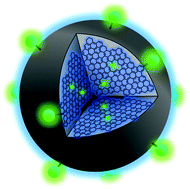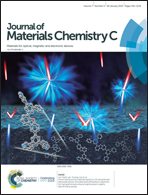Effects of nitrogen-doping on the photophysical properties of carbon dots†
Abstract
Passivation of carbon dots, via nitrogen-doping, enhances their photoluminescent properties yet the impact of the chemical composition of the passivating molecule remains poorly understood. In this work, we seek to clarify the role of nitrogen-doping in the observed fluorescence enhancement of carbon dots. Starting with citric acid, and using microwave-assisted synthesis, we systematically passivate carbon dots with a series of aliphatic amines with increasing nitrogen content. Significant changes in their surface chemistry are observed with increased N-doping as evidenced by infrared and X-ray photoelectron spectroscopies that clearly show a progressive decrease in the oxygen : carbon ratio and a concomitant increase in the nitrogen : carbon counterpart. Spectroscopic analysis reveals that surface passivation results in excitation-independent fluorescence with fluorescence quantum yields reaching 56.7%. We note that not all amines passivate carbon dot surfaces equally, with triamines offering the highest fluorescence quantum yields. Our results clearly demonstrate that the chemical makeup of the passivating agent is critical in tailoring the physico-chemical and optical properties of carbon dots.



 Please wait while we load your content...
Please wait while we load your content...